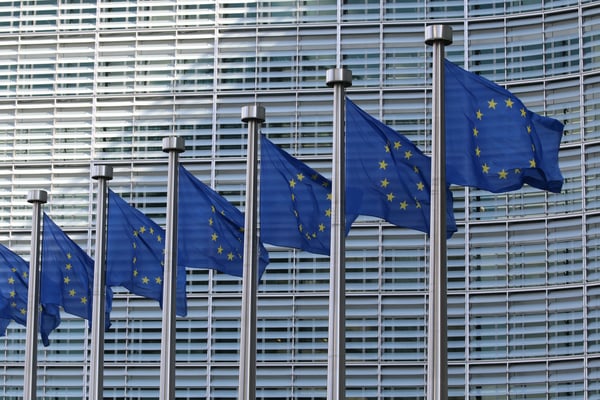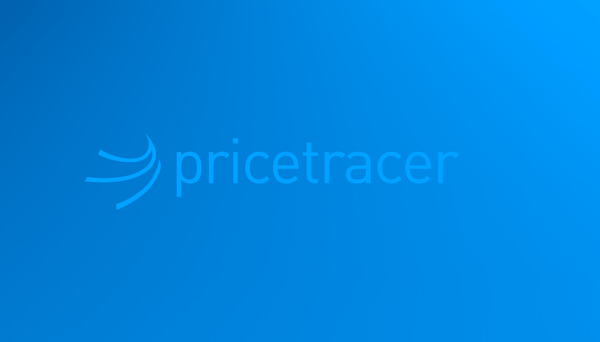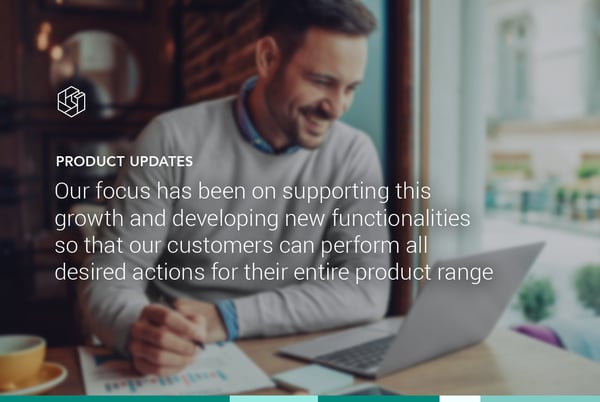Price Points by Omnia Retail

17.08.2023
Is e-commerce prepared for the EU’s new Price Indication Directive?
After its first introduction in 2021, followed by some delays in implementation, the EU’s Price Indication Directive (PID) is being implemented across the e-commerce and retail landscape throughout European member...
After its first introduction in 2021, followed by some delays in implementation, the EU’s Price Indication Directive (PID) is being implemented across the e-commerce and retail landscape throughout European member states including the Netherlands, Italy, Greece, Poland, and others. However, some countries have expressed concern about how the PID will be implemented, considering how vast and segmented the retail industry has become. How will this affect retailers, marketplaces and online stores, as well as consumers going forward? What are the specifications that retailers need to abide by? Omnia answers these questions and provides a solution for retail clients who may be concerned about how to implement this new legislation in an effective, seamless way. What are the PID’s key changes affecting retail stores and consumers? The PID is part of a larger legislative move within the Omnibus Directive towards bolstering consumer protection and transparency between retail stores and consumers. The PID section, which was a piece of legislation first created in 1998, is being updated with new rules to reflect the times. It focuses specifically on new ways of applying and advertising discounts, while the greater Omnibus Directive includes changes to other aspects of e-commerce such as online reviews, personal data, how aggregator websites display suggestions, and more. The PID focuses on ensuring retailers, online stores and vendors on marketplaces aren’t deceptively creating the illusion of a price decrease. Under Article 6a, a discount must be based on the lowest price within the last 30 days prior to the newly-introduced reduction and not a base price created by the retailer/vendor. In addition, when a trader intends on implementing a price reduction on an item, they must also show the item’s previous price. Price Announcements For example, a price decrease can be displayed as a percentage (“20% off”) or as a specific amount (“€20 off”). This can be shown with the previous price in a crossed-out form. Article 6a does not apply to long-term price reductions that shoppers may get with loyalty programs, cards or memberships, but specifically the price announcements. Here, we see how the PID gives transparency to pricing announcements: Before PID: A discount of 10% is announced. After PID: Discount is in fact 0% because the lowest price in the past 30 days is the same price as today. While a trader may usually advertise a discount of 33% (from 150€ to 100€) because it looks like a higher discount, thus incentivising consumers to buy a product, the PID now forces the trader to advertise either a 9.09% discount or not to advertise it at all. This means that as a retailer with an effective pricing strategy, one has to be able to access the cheapest price of the past 30 days and base their advertised discounts on it. More general price reduction announcements like “Sale now on” or “Black Friday specials” are also subject to Article 6a. Retailers, however, can still use general marketing techniques like “Best prices in town!” without Article 6a being invoked. Retailers The PID defines traders to be “any natural or legal person who sells or offers for sale products which fall within his commercial or professional activity”. In a nutshell, this includes sellers on marketplaces but not the actual marketplace itself or similar platforms like comparison shopping engines and aggregators. An example here would be eBay which acts as an intermediary platform between traders and shoppers. However, an intermediary like Amazon is subject to the PID rules when it is the actual seller of the goods or when it sells on behalf of another trader. In addition, Article 6a applies also to traders based outside the EU that direct their sales to EU consumers, including to traders offering goods via platforms. Talk to one of our consultants about dynamic pricing. Contact us Across the EU, reactions have been mixed Transposition and interpretation of the PID have not been a seamless or instantaneous process for most EU Member States. In early July, E-commerce Europe, which represents more than 150,000 businesses selling goods and services online, held a workshop to discuss its findings on how the PID is being approached by Member States. It showed mixed reactions and concerns, with each country approaching the PID with varying levels of seriousness. Among the concerns were the technical difficulties of indicating the prior price on price tags; how consumers will understand the various prices; how this affects promotional campaigns on items that need to sell rapidly (like fresh food), and the technical issues of displaying the prior price when selling through marketplaces. The countries experiencing the most difficulties were Italy, Sweden, Poland, Finland and Belgium. A number of survey questions were given to Member States regarding the implementation of the PID, with one survey showing high concern: Question: Have you experienced difficulties with implementing the new rules on price reductions? Answers: 10 Member States - Yes, regarding technical difficulties to indicate the prior price on physical price tags in stores. 9 Member States - Yes, it is more difficult to keep track of the prices and establish the prior price reduction. 8 Member States - Yes, regarding the concerns about less compliant competitors gaining a competitive advantage. 7 Member States - Yes, regarding technical difficulties to indicate the prior price in online selling interfaces. 5 Member States - Yes, regarding technical difficulties to indicate the prior price when selling through online marketplaces. How is Omnia taking action for existing and potential clients? In our Omnia 2.0 product that launched this year, our clients are able to have full insights into price history with a feature called the Directive Pricing Indicator. It shows the lowest selling price in the last 30 days on their dashboards so that brands and retailers utilising our product can easily comply with the Price Indication Directive. As the next iteration in our product development, we will make this data available in the setting of pricing strategies. In addition, Omnia plans to show the history of a client’s competitor prices in the last 30 days so that they are aware of their competitor’s pricing moves too. Your partner in price maturity and transparency The new Price Indication Directive will not only add value to the e-commerce experience for shoppers, but it will solidify trust and legitimacy between brands, retailers, their intermediaries, lawmakers and consumers. Transparency within pricing is a vital part of strategy and pricing maturity. As a client of Omnia’s, implementing these price-centric changes is efficient and simple. There is something to be said about a brand or retailer and their respective leaders wanting to improve their impact on the planet. As we’ve known and seen for the last five decades, it would be easy and mostly inconspicuous for a brand to simply continue the production, manufacturing and distribution tactics that are harmful to the environment. Up until recently, choosing sustainable operations within a business has been viewed as optional or as lacking demand from consumers.
Is e-commerce prepared for the EU’s new Price Indication Directive?
18.01.2022
Launch of a new SaaS product for brands
Pricetracer, an easy-to-use flexible pricing tool, providing control, analytics and knowledge to brands within the world of e-commerce from the new European market leader in pricing software. This Tuesday, Omnia Retail...
Pricetracer, an easy-to-use flexible pricing tool, providing control, analytics and knowledge to brands within the world of e-commerce from the new European market leader in pricing software. This Tuesday, Omnia Retail announced its launch of a new product offering for e-commerce focused brands and manufacturers: Pricetracer. "Pricetracer is a real innovation in the market for price optimisation software." The new software-as-a-service (SaaS) is a tailored made product servicing the needs of brands in the fast moving e-commerce industry. It enables brands to systematically track their product prices and retailer network across all markets in Europe. Andreas Frankenberger, CTO at Omnia, points out that: “With the decision to develop a stand-alone product like Pricetracer, we respond to the increased need for marketing and account managers of brands and manufacturers to systematically gather and analyse pricing data. All pricing tools in the market are primarily designed for retailers. In that sense, Pricetracer is a real innovation in the market for price optimisation software.” After joining forces in November 2021, the release of Pricetracer marks a major achievement for Omnia Retail and Patagona. Sander Roose, CEO of Omnia, comments: “It is great to see the combined company working on common projects right from the start. The Pricetracer is a great addition to our product portfolio, adding more value to our service, especially for our brand and manufacturing clients.” Pricetracer is a self-explanatory and easy-to-use tool. Starting with the Setup, users can implement the whole process independently. They also benefit from a flexible and transparent cost structure and have full control over all aspects of their monthly costs: selecting markets, uploading products and setting the monitoring frequency. Pricetracer enables the user to track price changes, compare price levels against the benchmark while identifying price leaders. New European market leader within the pricing software SaaS market. With constant product innovation, shared knowledge and gained expertise from Omnia and Patagona, along with some of the world's biggest brands, positions this front runner as the new European market leader within the pricing software SaaS market.
Launch of a new SaaS product for brands
04.07.2018
Product Announcement: Omnia University
Exciting news here at Omnia! We’ve just launched a new module: Omnia University. Omnia University is created with the goal to help everyone in using Omnia to its full potential and to provide our customers and partners...
Exciting news here at Omnia! We’ve just launched a new module: Omnia University. Omnia University is created with the goal to help everyone in using Omnia to its full potential and to provide our customers and partners with in-depth knowledge and expert opinions about everything related to retail, e-commerce, pricing, marketing, and technology. What’s new in Omnia University? E-learning resources: Find information about Omnia and how to get started with Omnia. Training courses: Find elaborate training material for pricing, marketing, and reporting. FAQs: Get quick answers to your questions as you search in the most frequently asked questions. Product announcements: Stay up to date about the newest features. Webinars: Gain in-depth knowledge with webinars created by experts. Where can you find Omnia University? Log in to your Omnia console to find Omnia University added to the main menu. By clicking the button you’ll be taken to a Zendesk environment where Omnia University is hosted. Will anything change within the current customer support options? No. Omnia University is a complementary feature that has been added to the current customer support options. You can still reach us as usual by phone, email and chat for any questions you have. Next steps We’re excited to help our customers and partners to get the most out of Omnia, and this is an important first step towards that vision. In the upcoming months, we will develop a complete e-learning environment with an elaborate course library for all users, from beginner to expert.
Product Announcement: Omnia University
08.11.2017
Hardware.info Added as Exclusive Data Partner
We are happy to announce that we have added Hardware.info as a pricing data partner for the Netherlands and Belgium. Omnia has a direct and exclusive API connection with Hardware.info's database and can collect and...
We are happy to announce that we have added Hardware.info as a pricing data partner for the Netherlands and Belgium. Omnia has a direct and exclusive API connection with Hardware.info's database and can collect and update competitor data multiple times a day. Next to their unrivaled data coverage in the hardware category, Hardware.info also has deep retailers coverage in other electronics categories. This data connection is ready to be used and can be connected within a few minutes. Please contact info@omniaretail.com for more info and a free prodcut assortment match. Unrivaled data coverage in Hardware categories Like the name suggests, Hardware.info specializes in hardware products: computers, components and peripherals. To provide you with an indication of the value of this data source, Omnia has compared the pricing data of over 100.000 hardware products to our current data sources. Hardware.info got the best score on both the number of products with pricing data (90% had a match) and the average number of prices found per product (6.3 retailers), making it an ideal addition to the current data sources for the hardware categories. Strong retailer coverage in electronics categories Next to the hardware products, Hardware.info also scored well in other electronics categories. Hardware.info might not always have the broadest product coverage of all the data sources, but definitely has the deepest retailer coverage: averaging at around 9 retailers per product, compared to an average of 5 over the other data sources. Adding Hardware.info as an additional data source for these categories will greatly increase the total overview of the competitor landscape and lead to better pricing decisions. Curious in your data coverage at hardware.info? Are you interested in comparing your product assortment against the database of Hardware.info? Please contact INFO@OMNIARETAIL.COM for more info and a free product match.
Hardware.info Added as Exclusive Data Partner
06.07.2017
Product Update: Improved Console Speed and Faster Channel Exports
After launching Omnia last year, we have been grown rapidly and already 12.5 million products run through Omnia's Dynamic Pricing and Marketing processes every hour. Our focus has been on supporting this growth and...
After launching Omnia last year, we have been grown rapidly and already 12.5 million products run through Omnia's Dynamic Pricing and Marketing processes every hour. Our focus has been on supporting this growth and developing new functionalities so that our customers can perform all desired actions for their entire product range. However, the combination of this rapid growth in both functionalities and products has caused some processes to take longer than might be expected. That's why we've spent a lot of time accelerating various screens and processes within Omnia over the last 2 months. Most likely you have already noticed the speed improvement in the console, but we would also like to inform you via this newsletter about improvements in 3 other area's. 1. Loading times console screens To our great satisfaction, all settings in Omnia are used quite extensively. So much so, however that sometimes more than a 100 marketing channels, field-mappings and/or pricing strategies are entered into Omnia, by one givin retailer. To ensure that the screens keep functioning properly with all these settings, we have greatly accelerated the load times of the screens below. This allows you to quickly navigate through the screens and adjust settings instantly and easily. Screens with improved load times: Marketing Channels & Reports overview Mapping of all fields in the three different sections: Connect > Import Mapping Marketing > Channels > Mapping Reports > Mapping Pricing > Settings > Strategies Pricing > Settings > Actions 2. Speed of running marketing channels and reports When updating marketing channels and reports, the update sometimes had to wait in line for other processes to finish. Consequently, it could take quite long before the channel was updated and one could verify the new settings. In order to provide faster feedback on manual changes, we have given priority to the export channels that are run manually. The export starts to update immediately after clicking the "run now" button and after a few moments, the exports can be checked, modified if needed, and re-run. 3. Pricewatch exports are finished earlier Due to the ever-increasing number of unique products in Omnia, we need to collect more and more price data from our data partners. Together with our various data partners we have been able to speed up these data connections. In addition, the data processing within Omnia has been optimized and the processing power is further expanded. The result: tens of millions of competitor prices are delivered well within the agreed times! We hope that these speed improvements will make working within Omnia even easier and more effective. Feel free to contact us if you have any more questions, by email (info@omniaretail.com) or call +31 (0) 35 699 02 22.
Product Update: Improved Console Speed and Faster Channel ExportsSign up to be the first to get information from Omnia.
Sign up now